#skeleton coast africa
Text
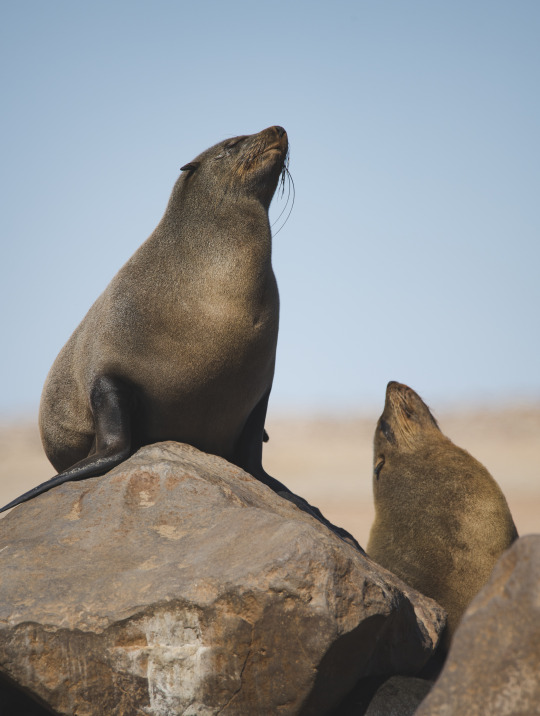
#seals#cape fur seals#sunbathing#cape cross#namibia#namibian#namibian coast#coast#cape cross namibia#africa#african coast#wildlife#seal colony#skeleton coast#skeleton coast namibia#skeleton coast africa#nature#ocean#wildlife photography#travel photography#animal#animals of africa#animal photography#natural world#outdoor photography#wild#seal#travels#travel blog
8 notes
·
View notes
Photo

Shipwreck on Namibia’s Skeleton Coast
#art#photography#namibia#coast#beach#shipwreck#skeleton#urbexplore#urban exploration#urbexlife#urbexphotography#africa#urbex africa
133 notes
·
View notes
Text

Skeleton Coast, Namibia.
15 notes
·
View notes
Video
youtube
The Skeleton Coast is the northern part of the Atlantic coast of Namibia and south of Angola from the Kunene River south to the Swakop River, although the name is sometimes used to describe the entire Namib Desert coast. The Skeleton Coast’s rough seas, roaring winds and strong ocean currents are primarily responsible for many of these beached ships’ fate. Many of the wrecks on the harsh coastline have been completely destroyed by the sun, sea, and wind but a few are still visible.
----------------
Die Skelettküste ist der nördliche Teil der Atlantikküste Namibias und erstreckt sich südlich von Angola, vom Kunene-Fluss bis zum Swakop-Fluss. Gelegentlich wird der Name auch verwendet, um die gesamte Küste der Namib-Wüste zu beschreiben. Die raue See der Skelettküste, die tosenden Winde und die starken Meeresströmungen sind in erster Linie für das Schicksal vieler dieser gestrandeten Schiffe verantwortlich. Viele der Wracks an der rauen Küste wurden von Sonne, Meer und Wind vollständig zerstört, aber einige sind noch immer sichtbar.


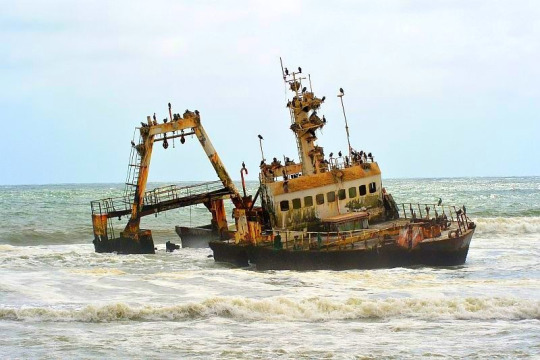






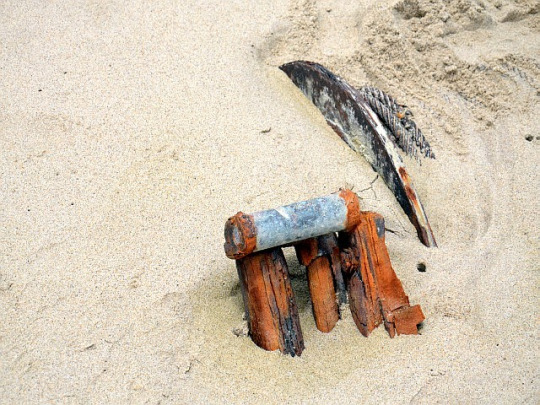


3 notes
·
View notes
Text
Skeleton Coast, Namibia
#skeleton#skeleton coast#namibia#africa#national park#whale skeletons#ship skeletons#travel#travelfacts#tourism#worldfacts#geotourism#naturaltourism#historical tourism#heritage tourism#darktourism
0 notes
Text
Namib Sand Geckos: these nocturnal geckos have biofluorescent markings that emit a bright, neon-green glow when exposed to the moonlight

This species (Pachydactylus rangei) is found only in the Namib Desert, which stretches across Namibia, Angola, and South Africa; the geckos typically inhabit the arid, coastal region known as the Skeleton Coast.
In order to escape from the blistering heat of the desert, they use their webbed feet to burrow down into the sand during the day, and then emerge only at night, when the temperature has finally dropped. The webbing on their feet also enables them to run more easily across the dunes.
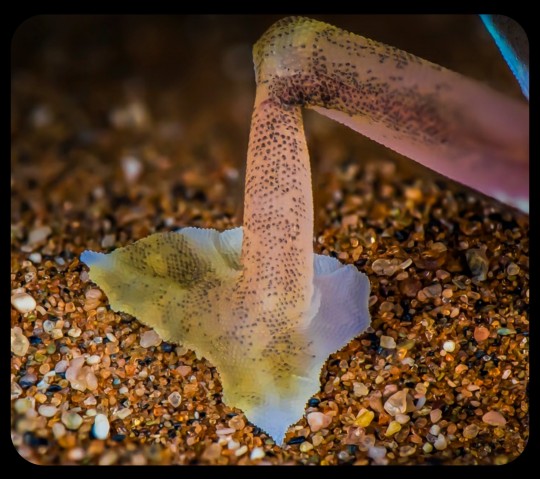
Namib sand geckos are covered in translucent scales, but they also have a strangely colorful appearance, as the colors/shades of their circulatory system, spinal column, internal organs, and optical membranes remain partially visible through the skin, producing various shades of pink, dark blue, purple, magenta, orange, and yellow.
They also have several distinctive markings running along their lower flank and encircling their eyes; these markings are known to fluoresce when exposed to UV light (including moonlight), emitting a bright, neon-green glow.

Some researchers have theorized that the biofluorescent markings may act as a signal to other geckos, allowing them to locate one another in the vast, desolate expanse of the desert, as this paper explains:
The fluorescent areas of P. rangei are concentrated around the eyes and along the lower flanks. This positioning is practically invisible to predators with a higher perspective (e.g. birds and jackals), but highly conspicuous from a gecko’s perspective. As P. rangei is sociable but generally solitary, and occurs at low population densities, such a signal might serve to locate conspecifics over greater distances ...
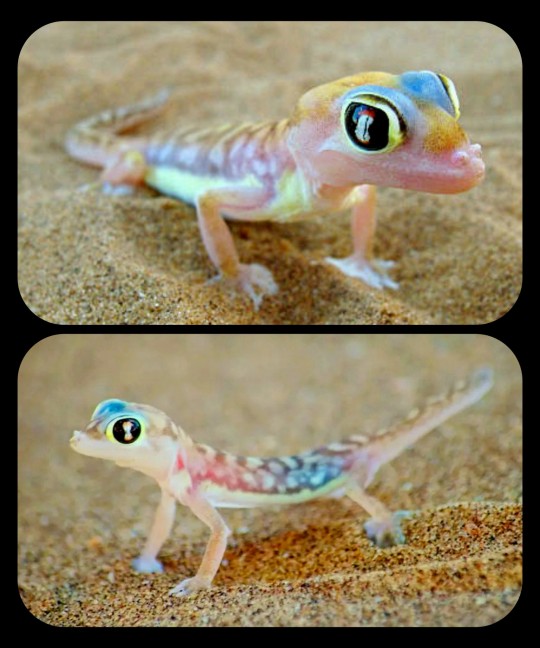
Encounters in P. rangei might serve purposes beyond mating opportunities: as the Namib desert has extremely low precipitation, fog is a key water source for its flora and fauna. Fog condenses on the bodies of the geckos, and they lick it from their faces. In husbandry, we have observed individuals licking water from conspecifics, taking advantage of a much greater available surface area.
Additionally, after short periods of isolation, the geckos run to meet each other. The combination of vital hydration with socialisation might reinforce signals that enable such meetings, and the cost of visibility to predators with higher vantage points, might constrain the signals to regions best visible from eye-level and below.
The Namib sand gecko is the only terrestrial vertebrate that is known to use an iridophore-based form of biofluorescence (you can find a more detailed explanation of that mechanism in the article mentioned above). The fluorescent dermal markings are also unique to this species.
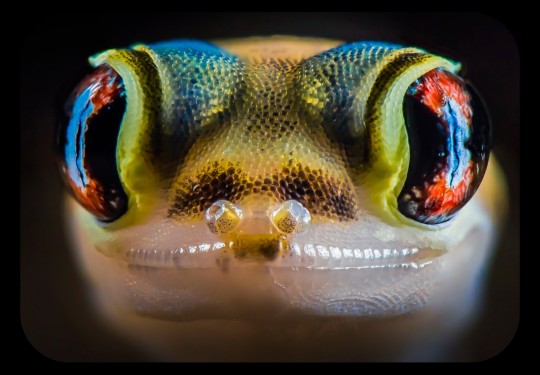
Sources & More Info:
Scientific Reports: Neon-green fluorescence in the desert gecko Pachydactylus rangei caused by iridophores
Animal Diversity Web: Pachydactylus rangei
Dr. Mark D. Scherz's Blog: A Neon-Green Glowing Gecko!
Australian Geographic: Skeleton Coast - Namibia's strange desert dwellers
#herpetology#reptiles#gecko#Pachydactylus rangei#namib sand gecko#palmatogecko#namib desert#namibia#biofluorescence#animals that glow#lizards#cute animals#biology#nature#africa#squamata#web-footed gecko#cool animals#geckos#South Africa#Angola#Skeleton Coast#wildlife#not an arthropod#but still pretty cool
174 notes
·
View notes
Text
coelacanth

like what you coe(lacanth)? the coelacanth (pronounced SEE-la-kanth) was believed to be extinct for millions of years until about 1938 when a population was found off one of the coasts of africa. subsequently more populations were discovered in the indian ocean/western pacific.
theyre often referred to as living fossils, in part probably because they looked old, but also there wasnt much evidence of morphologic change in really old fossils and their current skeletons. in 2006 though it was discovered they were more eel-like before their current state.
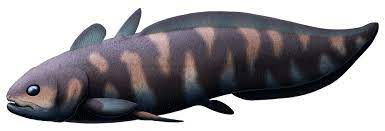

328 notes
·
View notes
Note
can I get an infodump about a random topic
ANON I LOVE YOU
ok so really summarized version. The story of Moby dick is based on true events!!! During the 18/19 hundreds one of the main sources of income for coast town was whale hunting! An Nantucket was one of the places where this was pretty the main income. A whaling ship called The Essex set off for a (approximately) two year long voyage from Nantucket USA, to Africa all the way down to south America (they killed all the fucking whales up north so now they had to go south) during this voyage the ship was constantly hit by storms that wrecked it and made them lose three of their five boats, they got another really bad one while traveling though the coasts of Africa though, which they used when they found a whale to chase and kill it. Eventually they reach south America, on the western side, and once there they get FUCKING ATTACKED BY A SPERM WHALE, THIS HAD NEVER REALLY HAPPENED BEFORE, the whale causes the ship to sink and now the survivors had to get on the only three hunting boats and find somewhere they could safely land in. Now the issue comes when the captains second hand keeps insisting that all the nearby islands are full of cannibals, they were actually islands with English missionaries who had settled there decades ago there were no cannibals anywhere but yk racism, so they stay on the boats, and eventually there's no food left, and so in every ship, when someone died from exposure and starvation, they decided to resort to cannibalism. Eventually two of the boats get found, totalling only five people alive between those two boats. The third one was later found with only skeletons remaining. There were eight survivors, three crew members had actually deserted earlier. One in Ecuador before the ship got sunk and two others in an island after the ship sank, they got rescued soon after. that's a summary of cannibalism in the sea :333
30 notes
·
View notes
Text
What I think all the Wilderlands are based on as a geography nerd
The Woods: England and Germany
This is one of the more obvious ones, most of the names of people from there have English origins and Barclay eats a lot of German food. Also just learned from @lordoftheweevils that Master Pilzmann uses ‘Frau’ in a letter to Barclay which is German for woman/wife.
The Sea: Ireland and Scotland
This one is also pretty easy being that Tadg might be the most Irish guy ever and the names also originate from those places. (I am also pretty certain that Amanda has said that it was based on them too but idk where)
The Desert: Egypt and Namibia
Most of the names of people from the desert are Arabic which is Egypts official language. I was having trouble with the second country until I remembered shipwreck coast is based on skeleton coast in Namibia!
The Tundra: Russia and Norway
Yasha’s name is Russian and Runa’s name is Norwegian. Amanda also went to Norway in preparation for writing TNC. This is probably the one I’m most sure on.
The Jungle: India and South Africa
I’m very sure the Jungle is based on India at least since pretty much all the names we know are Hindi, ‘Mayani’ is a South African name so I’m going with it. Definitely need more info on the Jungle.
The Mountains: Canada/USA and China/???
Ok ok, this one was a bit hard. All the characters we know from the mountains have names from so many places. Dumont and Lloris are French, Cecily and Cyril Harlow are English, Viola is Italian, and Leopold is Germanic. I originally thought it could be based on France (mostly because of Dumont) but it didn’t feel quite right, so I settled on the US and Canada which brings in the French influence but also accounts for the diversity in names. Then the first chapter of TNC came out and introduced Yunshan which is Mandarin, now this could work with CA and US but it didn’t feel right, and putting Canada and China together on this list when they are so far apart also didn’t feel right. So I took a look at the map again and I believe that the Mountains are split up into two completely different sections.
One is based on Canada and The US (where Halois is) and the other is based on China and possibly somewhere else in east Asia (where Yunshan is), this also gives us an idea where some of the people in the story who have Chinese names are from which was stumping me a bit.
Sorry for the long rant on this one, it has taken me a long time to come to this conclusion on the Mountains lol

#wilderlore#the wilderlands#geography#I’m feeling insane tonight#I did not expect to write that much for the mountains#this was supposed to be a short post#but I HAD to#I’m very obsessed with the wilderlands#I’m also not the greatest at geography#I just like it a lot
16 notes
·
View notes
Text
so here's an idea of tyrannosaurus rex feeding for you guys to think about, so i think of t.rex somewhat like lions, like today you'll see lions in basically everywhere in Africa, deserts, savanahs, jungles in some very small chances, and just as that they hunt different things specially due to that the live in different places, for example the lions of skeleton coast, i forgot what country that was in but basically the surroundings are very desertic so the lions in that beach are the only felines on earth who hunt pinipeds (seals) as their main prey item, you think of lions hunting all the large game like rhinos or zebras or antelopes but they don't do that they hunt seals, you've got the tsabo lions known for the pair known as the tsabo man eaters, both males and females don't have maines and they're specially dangerous, so basically in my project and in my future representations of tyrannosaurus rex i want to show that tyrannoaurus varies a lot in life style, feeding appearance, etc. they did cover over the entire north american continent and i also want to make a point that; something does not require to be "hyperadapted" or straight up "specialized" (nor with the tendency to become speciallized as a matter of fact) towards hunting something, if animals can hunt something they'll do, so sure, tyrannosaurus was adapted towards hunting mainly huge game like hadrosaurs and triceratops but they would prey on what ever they'll be able to get, so picture this, maybe tyrannosaurs in more coastal formations such as hell creek for instance hunted sea turtles or small mosasaurs as their main food item; sure, tyrannosaurus isn't perfectly adapted towards a coast like enviroment but its perfectly capable of doing such, this also does not mean that its going to have a tendency to evolve to be
2 notes
·
View notes
Photo
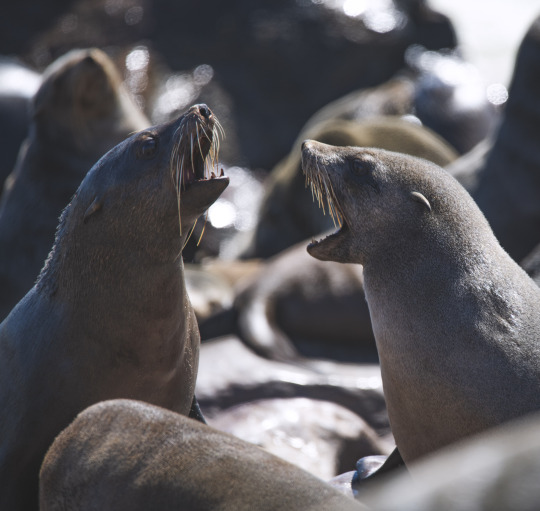
#seals#cape fur seals#cape cross#namibia#namibian#namibian coast#african#african coast#wildlife#seal colony#cape cross namibia#nature#coastal#skeleton coast#skeleton coast namibia#skeleton coast africa#african wildlife#confrontation#ocean#coastal wildlife#travels#wildlife photography#travel photography#outdoor photography#seal population#breeding grounds#natural world#wild#animal#animal photography
10 notes
·
View notes
Text
An Adventure of a Lifetime: Safari in Namibia
Namibia, a stunning country located along the southwestern coast of Africa, is a treasure trove of natural wonders waiting to be explored. From sweeping deserts, unique wildlife, and a spectacular coastline, safari enthusiasts are in for a treat. This blog article will delve into four of Namibia’s finest safari destinations: Etosha National Park, Sossusvlei, Damaraland, and Skeleton Coast. So,…

View On WordPress
4 notes
·
View notes
Text










The Skeleton Coast, Namibia.
5 notes
·
View notes
Text
“Arab traditions record that the Adites, sprung from the blood of Ham, were the first inhabitants of Yemen, Hadramaut, and the countries of Mahrah and Oman”
“This statement fully agrees with the 10th chapter of Genesis, in which we find a considerable portion of the descendants of Cush inhabiting this region, where also modern science has discovered unmistakable traces of the Cushites”
The sons of Cush are Nimrod, Seba, Havilah, Sabtah, Raamah and Sabteca…
“There can be no doubt as to the name Seba; all classical writers give it to the inhabitants of Yemen”
SOURCE;
(The student's manual of oriental history. A manual of the ancient history of the East to the commencement of the Median wars Volume 2; 1870)
“Now it is supposed by many people that Ethiopia was only the country of that name in Africa. But in Gen. ii. Ethiopia, or Cush, is said to be encompassed by one of the four rivers which branched off from each other at the site of the Garden of Eden, one of which was the Euphrates and another the Tigris”
“The Ethiopia there referred to must, therefore, have been in Asia, and as shown by the author of the article "Eden” in Smith's Dictionary of the Bible, included Arabia and also Susiana, or Chusistan, to the east of the Euphrates, which, as its name implies, was also the land of Cush”
“The names, "Havilah” and "Seba" two of the sons of Cush, and "Dedan," his grandson, were the names respectively of portions of Northern, Southern and Eastern Arabia implying therefore that Arabia was the first home of the Cushite race.”
“These ancient Cushites of the Arabian peninsula originally consisted of twelve tribes—Ad, Thamoud (probably so named after Thamus or Tammuz), Tasm, Djadis, Amlik (Amalek), Oumayim, Abil, Djourhoum, Wabar, Jasm, Antem and Hashem.”
“From this it would appear that the Amalekites who occupied the country to the extreme north of Arabia and the south of Palestine were of this race.”
“It would therefore appear that the Aribah or Adites, the ancient inhabitants of the Arabian peninsula, previous to the arrival of the Semitic Arabs, were the Cushite founders of the first Babylonian Empire; and that Arabia, lying midway between African and Asiatic -Ethiopia, was the first home of the Cushite race.”
SOURCE;
(John Garnier, “The Worship of the Dead, Or, The Origin and Nature of Pagan Idolatry and Its Bearing Upon the Early History of Egypt and Babylonia”; 1904)
“For some reason, the Cushites in Babylon, all at once swarmed out all over the earth”
“The historian Ridpath says, “We don’t know what caused the Hamites to leave Chaldea”
“The Bible account of the confusion of tongues gives a definite reason for the dispersion”
“Going east, these Cushite tribes overran the Semites in Elam, then continued on their eastern trek”
“Under the name of Dravidian they settled all along the coast of India and Ceylon”
“When pushed on by the later Aryans, they peopled the islands of the Pacific”
“A branch of these Cushites from Chaldea became the Mongols who peopled China and Japan and later crossed over into America and became American Indians”
SOURCE;
(Early Creationist Journals; 2021)
Haplogroup Q is the predominant Y-DNA haplogroup among modern Native Americans…
Haplogroup P is the direct paternal ancestor of haplogroup Q…
Haplogroup P is primarily found in indigenous populations of Melanesia, Southeast Asia, and parts of Oceania…
“The earliest South Americans tend to be more similar to present Australians, Melanesians, and Sub-Saharan Africans
SOURCE;
(https://www.ncbi.nlm.nih.gov/pmc/articles/PMC1317934/)
“The northeast Asian affinities of present-day Native Americans CONTRAST with a DISTINTIVE morphology seen in some of the EARLIEST American skeletons, which share traits with present-day Australasians (indigenous groups in Australia, Melanesia, and island Southeast Asia)
SOURCE;
(https://www.ncbi.nlm.nih.gov/pmc/articles/PMC4982469/)
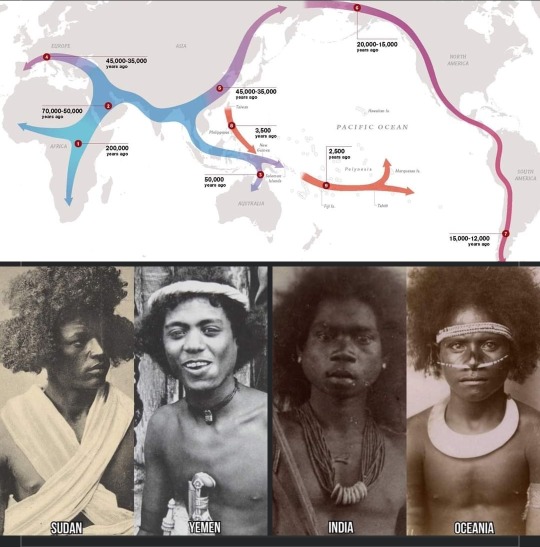
4 notes
·
View notes
Text
March 22, 2023 - Day 83
Abidjan, Ivory Coast, Africa
Abidjan is a city on the southern Atlantic coast of Côte d'Ivoire, in West Africa. With a population of 6.3 million it is the sixth largest metropolis in Africa. With skyscrapers rising above the Ébrié Lagoon it is often referred to as “the Paris of West Africa” and its business district “the Manhattan of West Africa”.
We took a ship arranged tour to a place called Grand-Bassam. It was the French colonial capital of the Ivory Coast in the late 19th century. It is kind of sad because the place it full of French Colonial buildings which, at one time, must have been beautiful but have been allowed to wither away to a very dilapidated and deteriorated state. The place was designated a UNESCO World Heritage Site in 2012. Without some help the place will become just a set of building skeletons.
We also visited some art shops and a church. There are a lot shanties with each one having its own tv dish. The place definitely fits my stereotype of a large African city. Hot, humid climate with people everywhere. The ladies balancing everything you can imagine on their head all dressed in colorful loose fitting dresses. The bearded men with shaved heads all wearing long pants. The language is French and the city buildings and infrastructure is strongly influenced by the French.










4 notes
·
View notes
Text
New Dinosaurs & Features Come to Jurassic World Evolution 2 THIS WEEK
The latest update to Jurassic World Evolution 2 promises to bring new updates and plenty more dinosaurs as the game gets a free update, and also a brand-new dinosaur pack – the Late Cretaceous Pack. In this article we’ll take a closer look at the newest dinosaurs added to the game – and also the features which are coming with the free update.
The first animal added is a brand-new pterosaur known as Barbaridactylus – named after the Barbary Coast of North Africa where it was discovered. This pterosaur follows a string of Pterosaurs with unique crests and unique names, and I’m excited to have it added to the roster of avian animals already in the game.
Another exciting edition for me as a fan of Dinos In The Wild is the towering Sauropod known as Alamosaurus. This humongous dinosaur is one of the largest dinosaurs ever discovered, and features unique spines running down it’s shoulders, back and tail.
Alongside this we have the Australovenator – a unique carnivore which lived in Australia about 95 million years ago. This animal is a nimble predator – with sharp teeth and flexible arms. It’s much more mobile than many of the other carnivores in our parks – adding a unique new type of bipedal animal to the game.
Lastly, we have Styxosaurus – a long and agile new marine reptile which will be available to be hatched in lagoons throughout our parks. This animal is unique in how streamlined it is – and it is great to see bioluminescent colours returning with this animal.
Alongside these brand-new animals, update four is also joining the game – bringing a ton of new features which have been requested by fans. The first includes one I am very excited for – which is the ability to customize our Lagoons. Frontier show a placeable Indominus Rex skeleton as one of the scenery pieces – emphasizing just how much variety we will now be able to add to our lagoons. It’s safe to say Isla Nublar recreations just hit a new level of detail!
There are also behavioral changes – with escaped aerial reptiles now attacking helicopters, and marine reptiles attacking the wall of lagoons when they are uncomfortable. Alongside this there will also be some additional inter-species relationships added to enrich the behaviours shared between different types of dinosaurs. We also get additional building decorations and the ability to change decorative lights throughout our park – allowing us to add different colours. I can’t wait to add some red emergency lighting to areas of my park!
A new overlay feature is also getting added to the game’s Capture Mode – enabling us to add postcard and stamp overlays to screen captures. And lastly but certainly not least, there will be a slew of new updates to the game’s sandbox settings. I won’t list them exhaustively here – you can read the full update on the Frontier Forums.
This DLC adds some cool new animals to the game, and I also think it is awesome to once again see a beefy free update from the Frontier team – showing their commitment to continuing to develop the best Jurassic Park builder we have ever had. I appreciate all the improvements made here – particularly the ability to customize our Lagoons – and cannot wait to see what else may be on the horizon for the game in the future.
This DLC pack and the free update will be available to all players on September the 15th. Stay tuned for more details on all things Jurassic World Evolution 2 in the near future!
Written by: Tom Jurassic
6 notes
·
View notes